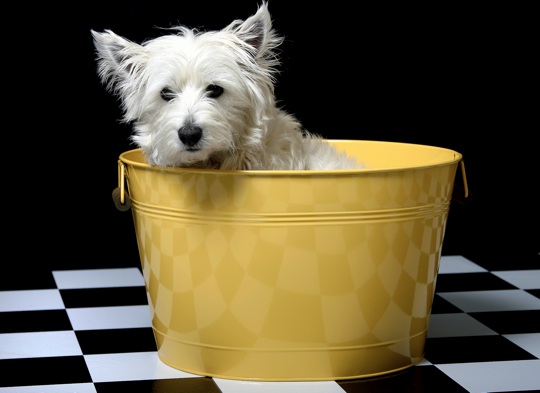
- Manage the environment. Close doors, use crates, baby gates, tethers, et cetera.
- Get a clean bill of health from a veterinarian.
- The dog should be leashed, confined or supervised at all times while inside.
- Anytime you cannot directly supervise your dog, use a crate or confinement area to keep your dog and your house safe.
- If you will be gone for periods longer than the dog can wait, place newspaper (or house training pads) on the flooring of the area where your dog will be confined.
- Introduce your dog to the concepts of confinement and alone time.
- When you are inside and your dog is not confined, use a tether.
- To use a tether, make a 6-9 foot lead you can attach to furniture or your waist.
- Always provide your dog with adequate access to the “potty” area.
- Feed your dog at the same times each day
- Unless directed otherwise by a veterinarian, take up bowl and uneaten food after 15-20 minutes.
- Keep a log of feeding and elimination until you learn your dog’s schedule.
- Always attach a leash, go out with the dog, and lead him or her to the elimination area.
- Wait patiently for 5-9 minutes. If the dog doesn’t eliminate, return inside, crate or confine the dog for 20 minutes and then try again.
- Teach your dog cues for defecating and urinating on command.
- Teach your dog that rewards are for eliminating outside.
- Reward your dog for eliminating outside.
- Teach your dog to ring a bell to signal desire to go outside.
- Never scold or punish your dog for any “accidents”.
- Clean soiled, inside areas, with cleaners containing pet odor neutralizers.
- When your dog becomes more reliable, gradually grant supervised access to more areas of the house.
Alan J Turner, Companion Animal Behavior Counselor & Trainer – Canine Specialization
Private and Group Dog Training in Memphis, TN
Owner: How’s Bentley

One Reply to “House Training Quick Start Guide”
Comments are closed.